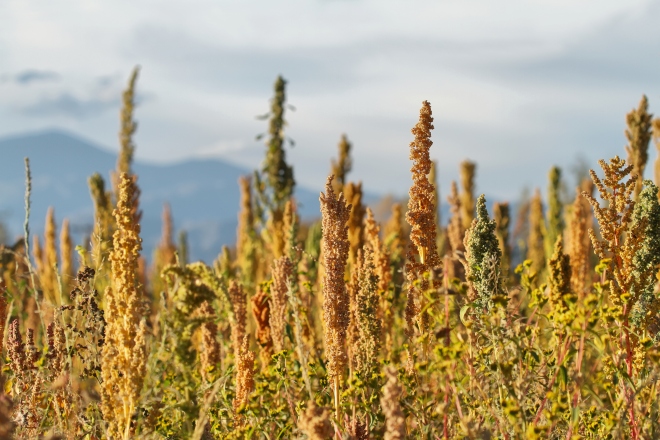 Quinoa is a grain like crop that’s grown for its edible seeds. Its leaves can also serve as vegetables, albeit on a limited scale. The plant thrives in well-drained soils and needs a considerably long maturing season. It also requires warm temperatures not exceeding 90°F (32°C.
Quinoa is a grain like crop that’s grown for its edible seeds. Its leaves can also serve as vegetables, albeit on a limited scale. The plant thrives in well-drained soils and needs a considerably long maturing season. It also requires warm temperatures not exceeding 90°F (32°C.
How to Grow Quinoa
Quinoa resembles lambs’-quarters especially during the early growth stages. Seeds should thus be sown in rows to avoid confusion with the weeds. Due to the small size of the seeds, one could preempt thinning by mixing it with radish seed or sand, as is at times done with carrot seeds.
The small seeds need good surface preparation and sufficient moisture for them to germinate successfully. They should be sown in quarter inch deep rows with about one and a half to two feet between rows. One could plant them by hand or use a row seeder.
After germination, the seedlings need to be thinned to yield a 6-18-inch gap between them. The thinned seedlings can be used as additions to salads. One gram of seed sows about 50 feet of row, with an acre requiring about a pound.
Quinoa Garden Maintenance
Though quinoa is a low maintenance crop, it’s normally affected by weeds, especially in the early growth stage. There are two ways in which they can be avoided, namely mulching and cultivating. If soil moisture is sufficient, germination could be achieved without irrigation.
In such a case, one should start watering the plants only when the reach the two- or three-leaf stage. Quinoa appears to grow slowly at first but is tremendously drought resistant. When the plants reach a height of 1-2 feet, they start growing rapidly with the canopy closing in.
This helps shade out the weeds and keeps moisture evaporation low. During inspections, one may notice symptoms of insect larvae munching the seedlings. This shouldn’t be much of a concern as it won’t impact the harvest significantly.
Harvesting Quinoa
The plant is ready for harvesting when all leaves have fallen and only the dried seed heads remain. One should watch the weather when the plant reaches this stage because the dry seeds could germinate if rained on. If the heads haven’t dried completely, they should be harvested when the seeds are hard enough to resist indentation when pressed with thumbnails. They then need thorough drying before storage.
To determine if the plant is harvestable, the flower heads should be shaken briskly but gently. If the seeds fall off readily, then one could commence harvesting. Ripe grain can be gathered easily in dry weather by bending the plants over a bucket and rubbing the seed heads between one’s hands.
The seeds need to be cleaned by winnowing using a fan. Further drying is usually necessary to keep off mold during storage. One can spread it on trays during hot days or use an indoor heat source. One should keep stirring them from time to time until they’re completely dry. Quinoa seeds should be stored in in a cool, dry place using air-tight containers.
Follow us for more articles that will give you the best garden on the block.

The quinoa seeds are incredibly bitter unless they are washed in water a few times to remove a coating of saponins. I tried eating some seeds fresh off my plants and found that out. The saponins interfere with digestion so must be removed. White seeded varieties have lower amounts of saponins.
Great tip. Thanks for giving our article a read.
Great pic! I’ve never seen quinoa plants before
Great article! Especially since the new popularity of quinoa in North America is causing hardship in countries to our south, where it’s a staple but suddenly scarce and expensive due to exports. Solution: grow our own.
Mine looked rusty like in your photo. Is it mature at this stage. I didn’t know and I threw it in the compost bin!
Hmm.. It should be very dry at the time of harvesting. I would have to see a picture to be able to tell you for sure.